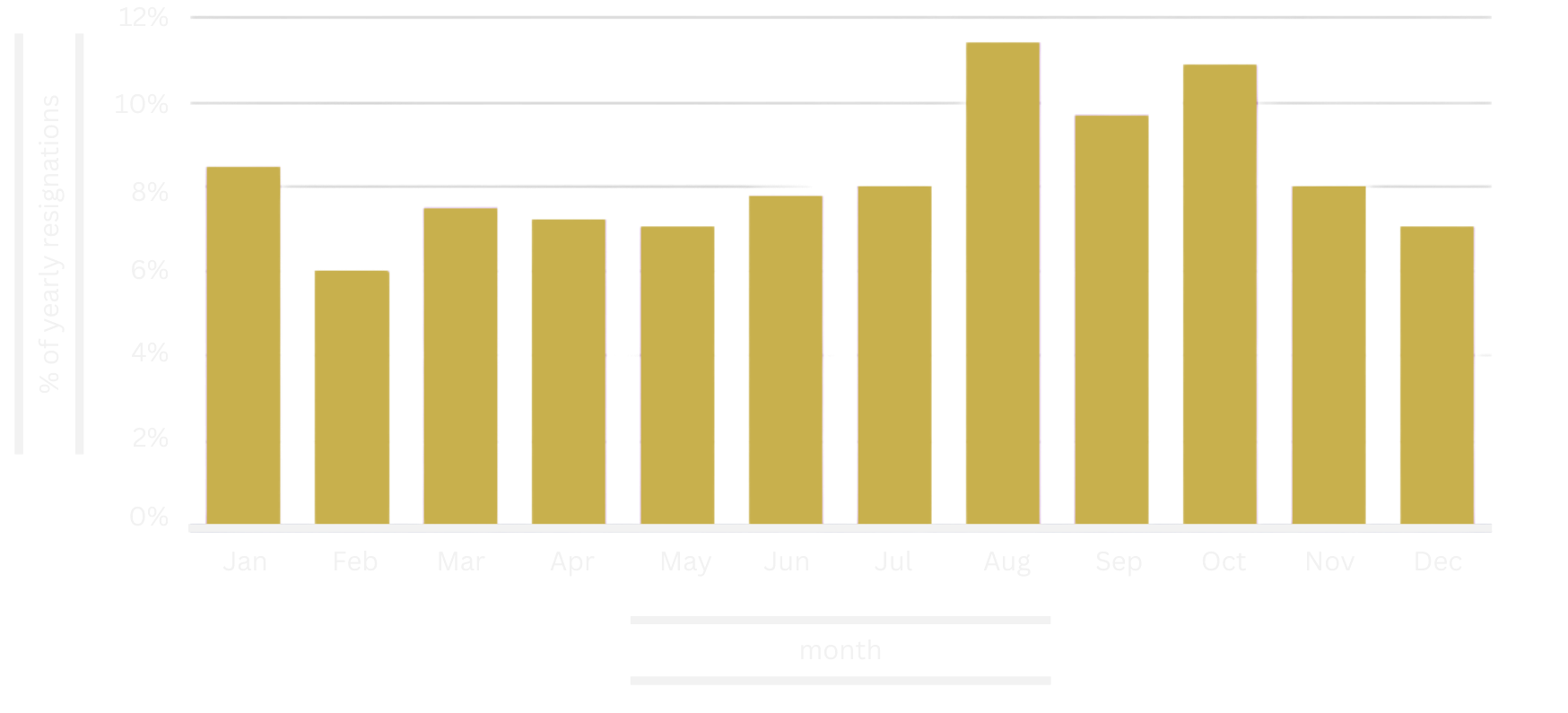
Employers Beware: August Is The Month Employees Are Most Likely To Quit
- August is the most popular month for resignations.
- The month of October is the second most popular for employees to resign.
- More over a third of all resignations occur in August, September, and October.
- In February, employees are the least likely to resign.
*According to data from Freedom of Information Requests
The most common months for workers to quit
August is the most popular month for employees to resign, accounting for 11.61% of all resignations throughout the year. This is closely followed by October, which sees 11.34% of the year’s resignations.
According to the Freedom of Information Requests research, individuals tend to resign after the summer holidays. Over a third of all resignations are made in August, September, and October, indicating that individuals utilise the summer to reflect. People may use their vacation time to reevaluate their existing positions and quit in order to explore other chances or make a change before the end of the year.
According to the report, employees are least likely to quit in February, with only 6.08% of all resignations offered in this month.
Below is a graph showing the average proportion of monthly resignations, averaged on two calendar years.
The most common reasons for workers to quit
People quit their jobs for a variety of reasons, including relocation, a career change, financial considerations, family life, or personal reasons. According to the ABN Resource Lubricants Talent Report 2023, for 31% of lubricants professionals, the top motivator for a job change is higher compensation, followed by career advancement opportunities and better work-life balance.
However, employers should not be disheartened when a member of staff tenders their resignation. Hiring a new employee is not anything to be concerned about because it may provide you with the opportunity to refresh and restructure your organisation.
The best strategies to retain talent
When an employee resigns, it can inspire a variety of reactions from business leaders and managers, who may be glad to see their employees’ personal growth and progress while also facing the problems of filling the vacant post. Although it may be tempting to rush the recruiting process in order to keep the business operating smoothly, it may be more beneficial to invest time in discovering the best applicant, since this method is more likely to generate favourable long-term outcomes for the organisation.
After 15+ years of placing candidates in a variety of senior roles, we’ve learnt some key retention strategies from our clients on how they keep hold of great talent.
Some examples of talent retention strategies include:
- Considering the company offerings and whether anything may be altered or added to improve working conditions or the environment, such as providing flexible working hours or having a diverse and inclusive workforce with a strong leadership team.
- Conducting frequent check-ins with employees to see how they are doing and to inquire about their well-being and job satisfaction.
- Implementing frequent compensation evaluations and compare employee perks and wages to those of the company’s rivals.


